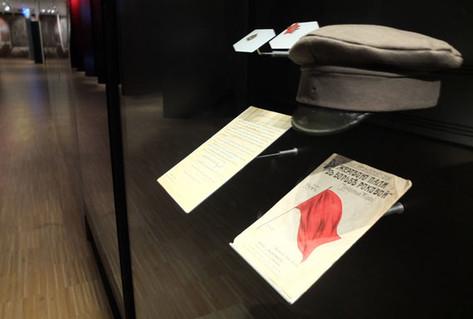
The February Revolution of 1917, which deposed the monarchy, united the anti-tsarist opposition from liberals to socialists, taking up the ideals of the French Revolution of 1789. During 1917 the claims became more radical, and ideas of a democratic republic were replaced by calls for direct rule by the Soviets – through councils of Workmen’s and Soldiers’ Deputies.
Finally, on 7 November 1917 (or 25 October 1917 according to the Julian calendar which was then in use in Russia) the Bolsheviks, who were originally members and supporters of the radical faction within the Russian Social Democratic Labour Party, took over control in Petrograd and overthrew the Russian Provisional Government which was in power after the abdication of Tsar Nicholas II but had proven to be ineffectual. The Council of People's Commissars of the newly proclaimed Russian Soviet Federative Socialist Republic was established.
The October Revolution of 1917 had a great impact on Russian, European and world history throughout the 20th century. It led to the establishment of a Communist system, which for decades was seen by many Europeans as an alternative to fascism, but also to parliamentary democracy and the liberal market economy.
The Communists (Bolsheviks or Reds) and their opponents, the Whites, both used terror as an instrument of war. In late 1918 the Bolshevik Council of the People’s Commissars issued a decree titled ‘On the Red Terror’, which allowed the shooting of members of the White Army and imprisoning ‘class enemies’ in concentration camps.
The triumph of Communism in Russia raised fears and hopes across Europe that the socialist revolution would go beyond Russia’s borders. It didn´t, but several communist upheavals occurred across the continent, sometimes with direct Soviet support, such as in Finland and Latvia. Large numbers of people were killed in the civil wars triggered by these uprisings. The communist revolution however, didn’t succeed outside of what would become the Soviet Union in 1922.
The Marxist ideology was used to legitimize the regime in the USSR, which caused millions of deaths. In striving to create a 'New Soviet Man' it deprived people of basic freedoms and rights, and intervening in their very privacy. Vladimir Ilyich Ulyanov, known as “Lenin” (1870-1924) was the main figure of the October Revolution in 1917, which resulted in establishing a one-party state with a leading role for the Bolshevik Party. After his death in 1924, Lenin became a subject of a cult of personality within the Soviet Union, and Marxism-Leninism became the official doctrine of the totalitarian regime.
After Stalin's rise to power, in the late 1920s the system became even more repressive than before. Up to Stalin's death in 1953, millions of people in the USSR were sent to Gulag camps, fell victim to mass deportation and famine caused by forced collectivisation, or became subjected to other forms of persecution. In geopolitical terms the result of the Russian Revolution was the rise of the USSR as a totalitarian superpower competing with the USA for world supremacy.
